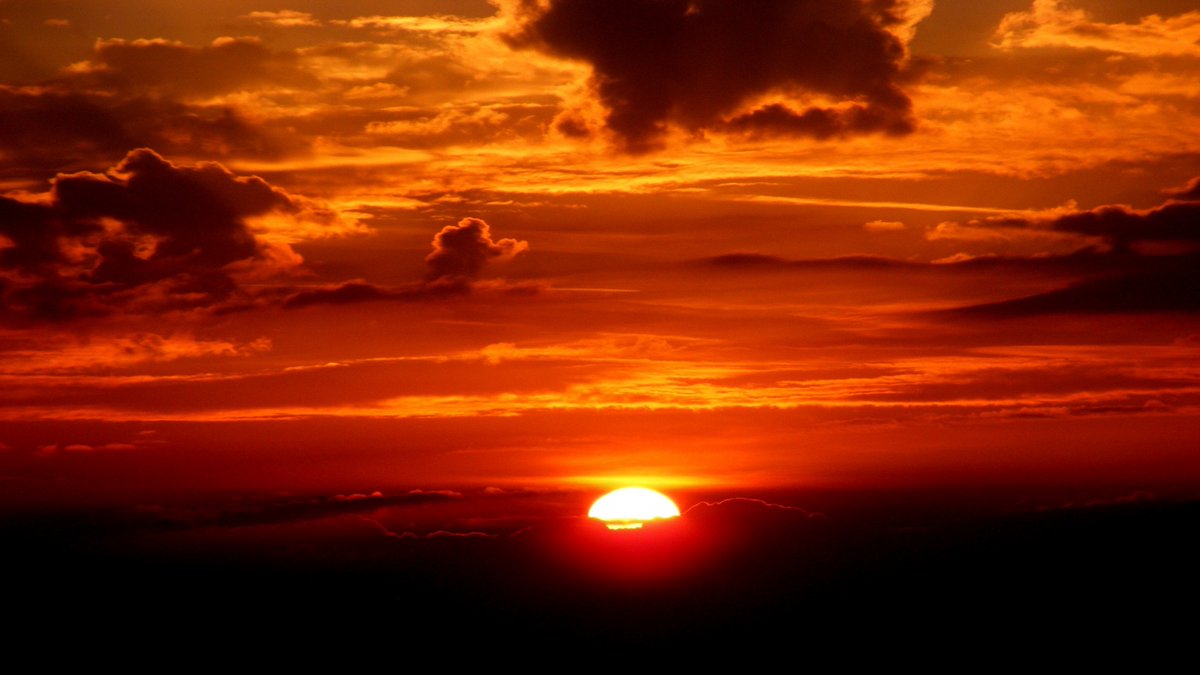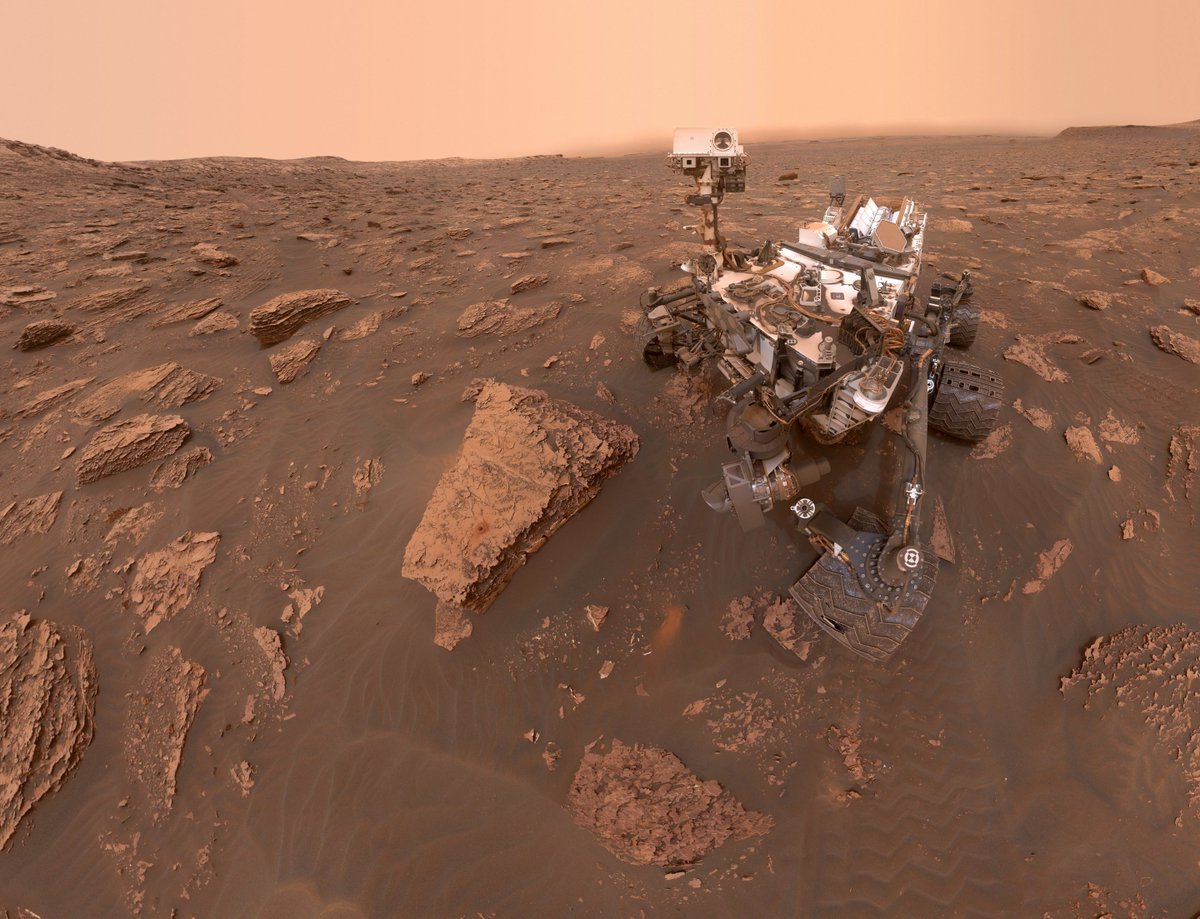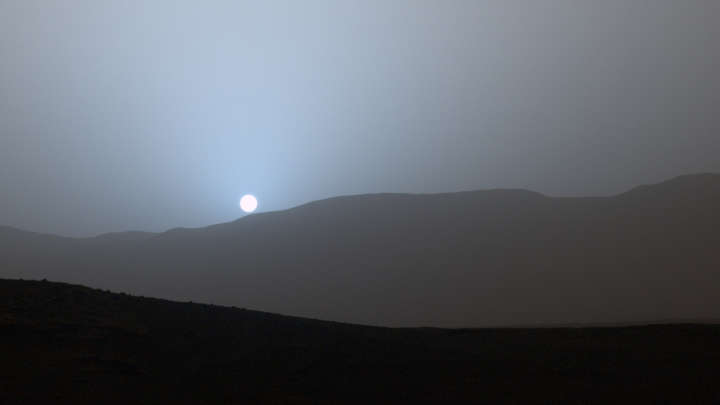Alright, Mars fun fact of the week:
If you look up what a sunset on Mars looks like, you’ll see that it& #39;s blue, and not red-orange like it is here on Earth. It& #39;s pretty cool, but have you ever wondered why this is the case? https://abs.twimg.com/emoji/v2/... draggable="false" alt="🤔" title="Thinking face" aria-label="Emoji: Thinking face"> (1/n)
https://abs.twimg.com/emoji/v2/... draggable="false" alt="🤔" title="Thinking face" aria-label="Emoji: Thinking face"> (1/n)
If you look up what a sunset on Mars looks like, you’ll see that it& #39;s blue, and not red-orange like it is here on Earth. It& #39;s pretty cool, but have you ever wondered why this is the case?
This is due to something called Rayleigh Scattering. Particles in the atmosphere that are smaller than the wavelength of incoming radiation scatter light. On Earth, blue light is scattered more because of its short wavelength…. (2/n)
… compared to red light, which also means its comparable in size to the particles scattering it, leading to it being scattered more. This is what gives our atmosphere its blue hue. Then, during sunrise or sunset, light has to... (3/n)
… penetrate deeper into our atmosphere. Light is scattered more and this leads to red light being more visible. Pretty cool right? So for Mars, things are slightly different. (4/n)
Mars’ atmosphere is super thin, and its surface pressure & gravity is much lower than Earth’s. So first Rayleigh Scattering doesn’t happen much, and Mars’ dry dusty surface leads to a lot of dust within the atmosphere. (5/n)
This leads to a lot of dust being in the atmosphere. These dust particles are big and closer in size to incoming light, which means that a different type of scattering occurs which has a different effect on incoming light. (6/n)
Mie Scattering occurs when large particles, such as the dust on Mars, scatter light. Red having a longer wavelength is then scattered more efficiently, which leads to the red sky during the day, and a blue sunset and sunrise (7/n)
Now, if a kid ever asks you why the sunset on Mars is blue, you can flex your new cool knowledge on Rayleigh and Mie Scattering on them  https://abs.twimg.com/emoji/v2/... draggable="false" alt="😎" title="Smiling face with sunglasses" aria-label="Emoji: Smiling face with sunglasses">(and also do good science communication!). (8/8)
https://abs.twimg.com/emoji/v2/... draggable="false" alt="😎" title="Smiling face with sunglasses" aria-label="Emoji: Smiling face with sunglasses">(and also do good science communication!). (8/8)

 Read on Twitter
Read on Twitter (1/n)" title="Alright, Mars fun fact of the week:If you look up what a sunset on Mars looks like, you’ll see that it& #39;s blue, and not red-orange like it is here on Earth. It& #39;s pretty cool, but have you ever wondered why this is the case? https://abs.twimg.com/emoji/v2/... draggable="false" alt="🤔" title="Thinking face" aria-label="Emoji: Thinking face"> (1/n)" class="img-responsive" style="max-width:100%;"/>
(1/n)" title="Alright, Mars fun fact of the week:If you look up what a sunset on Mars looks like, you’ll see that it& #39;s blue, and not red-orange like it is here on Earth. It& #39;s pretty cool, but have you ever wondered why this is the case? https://abs.twimg.com/emoji/v2/... draggable="false" alt="🤔" title="Thinking face" aria-label="Emoji: Thinking face"> (1/n)" class="img-responsive" style="max-width:100%;"/>






